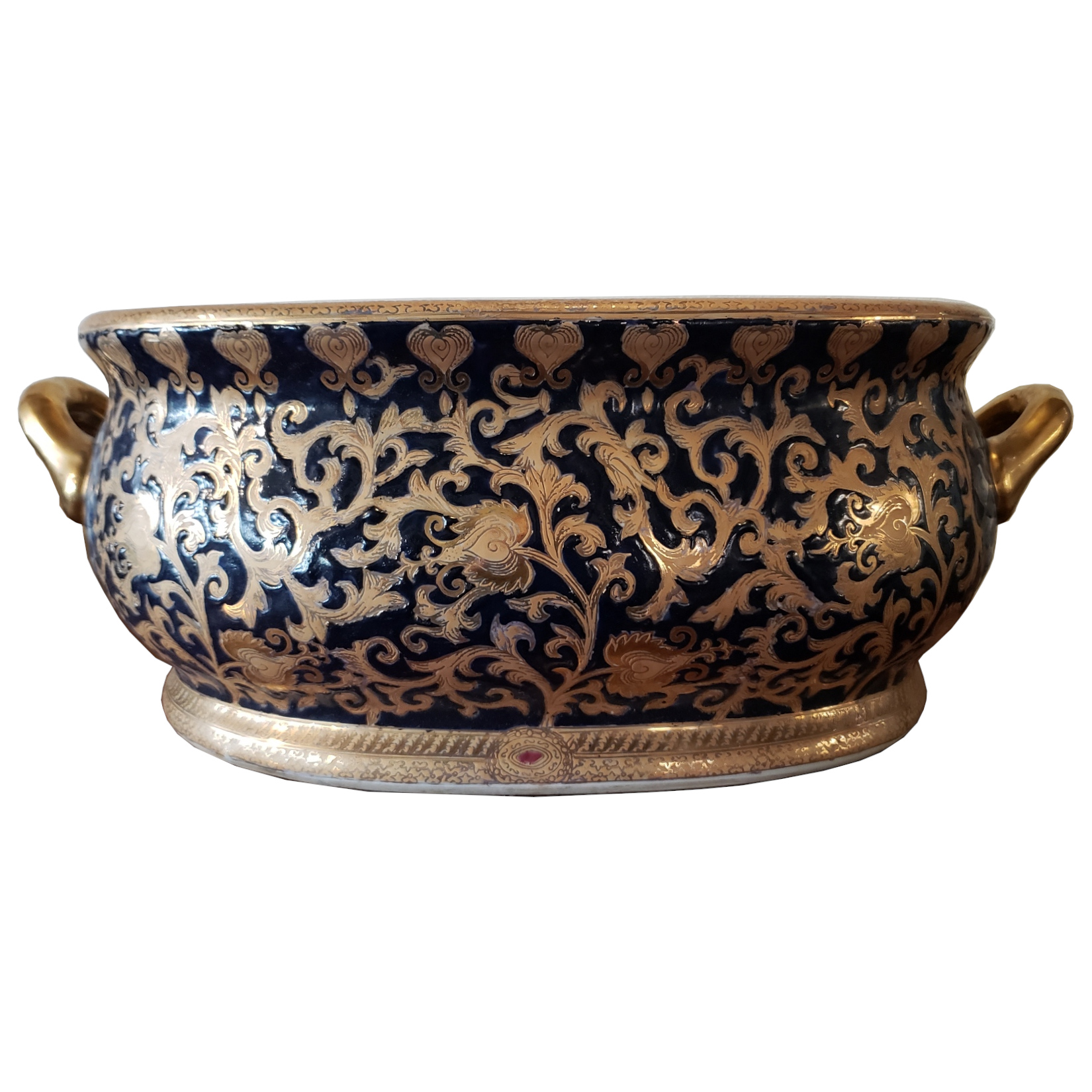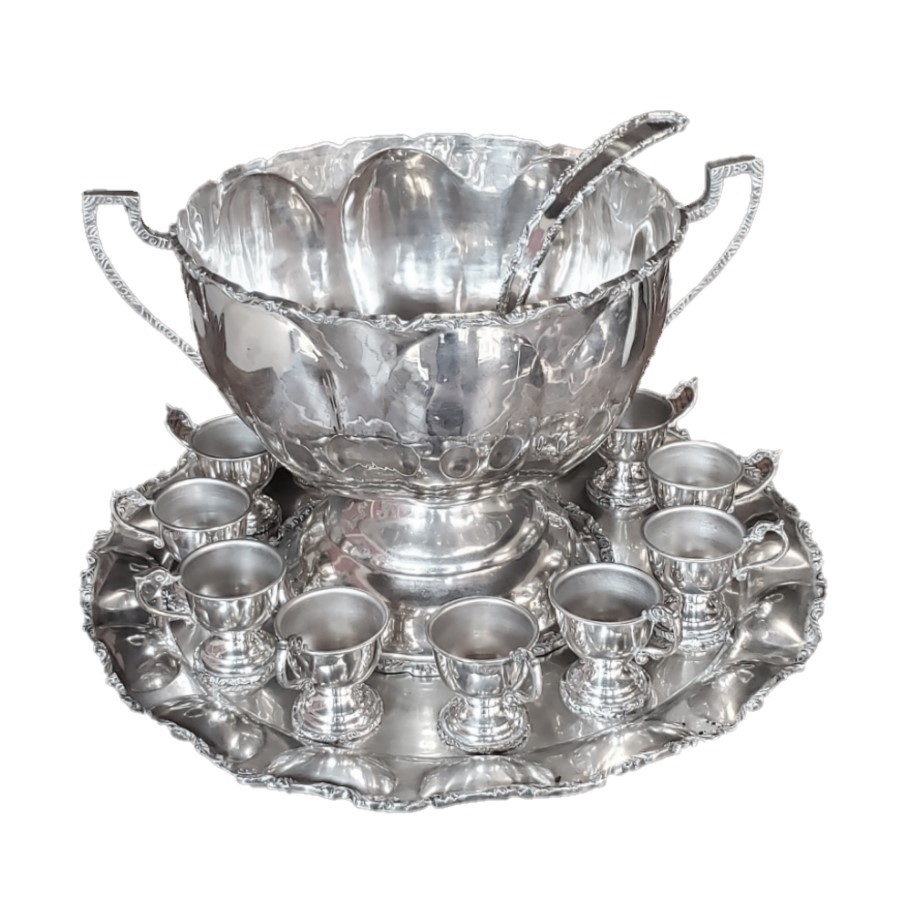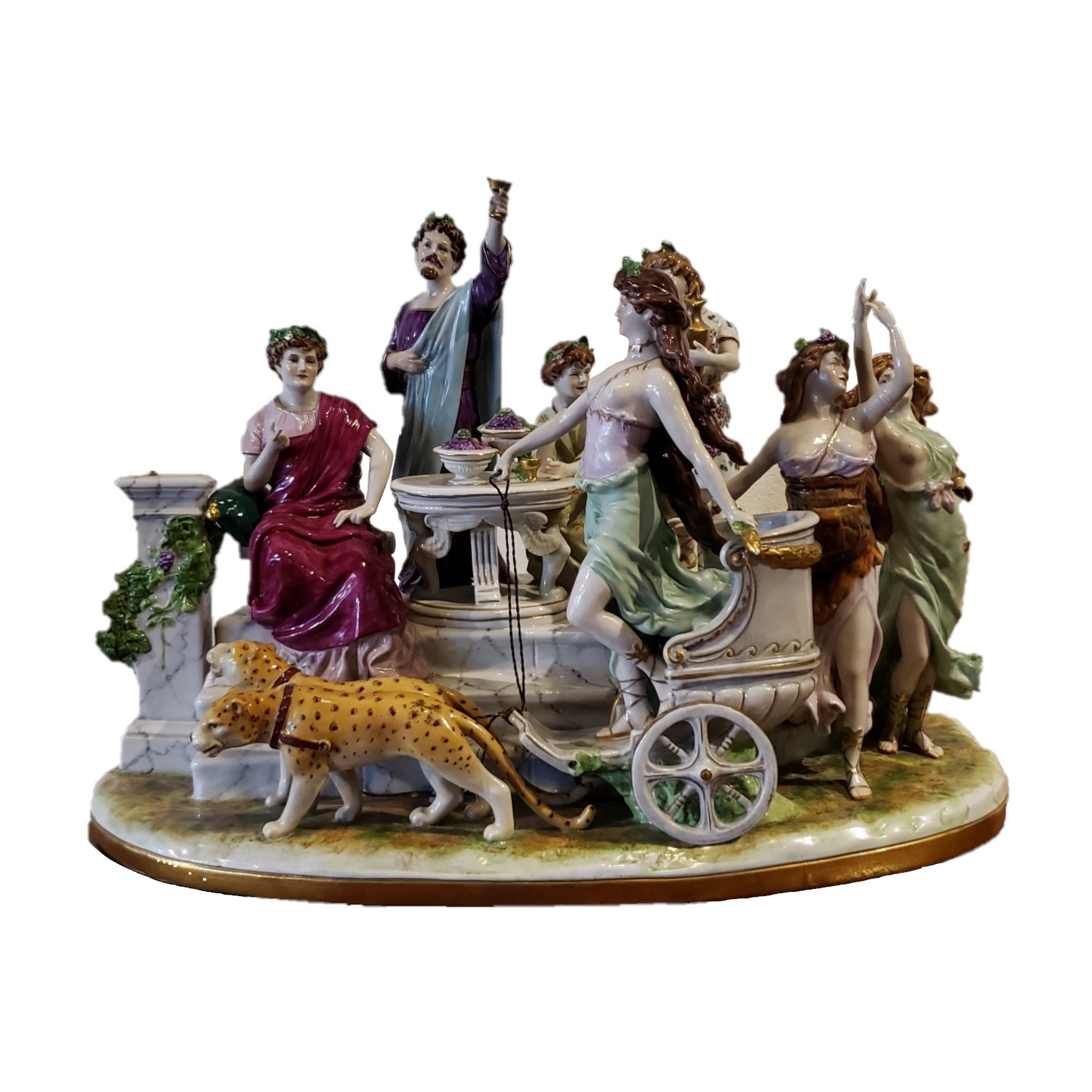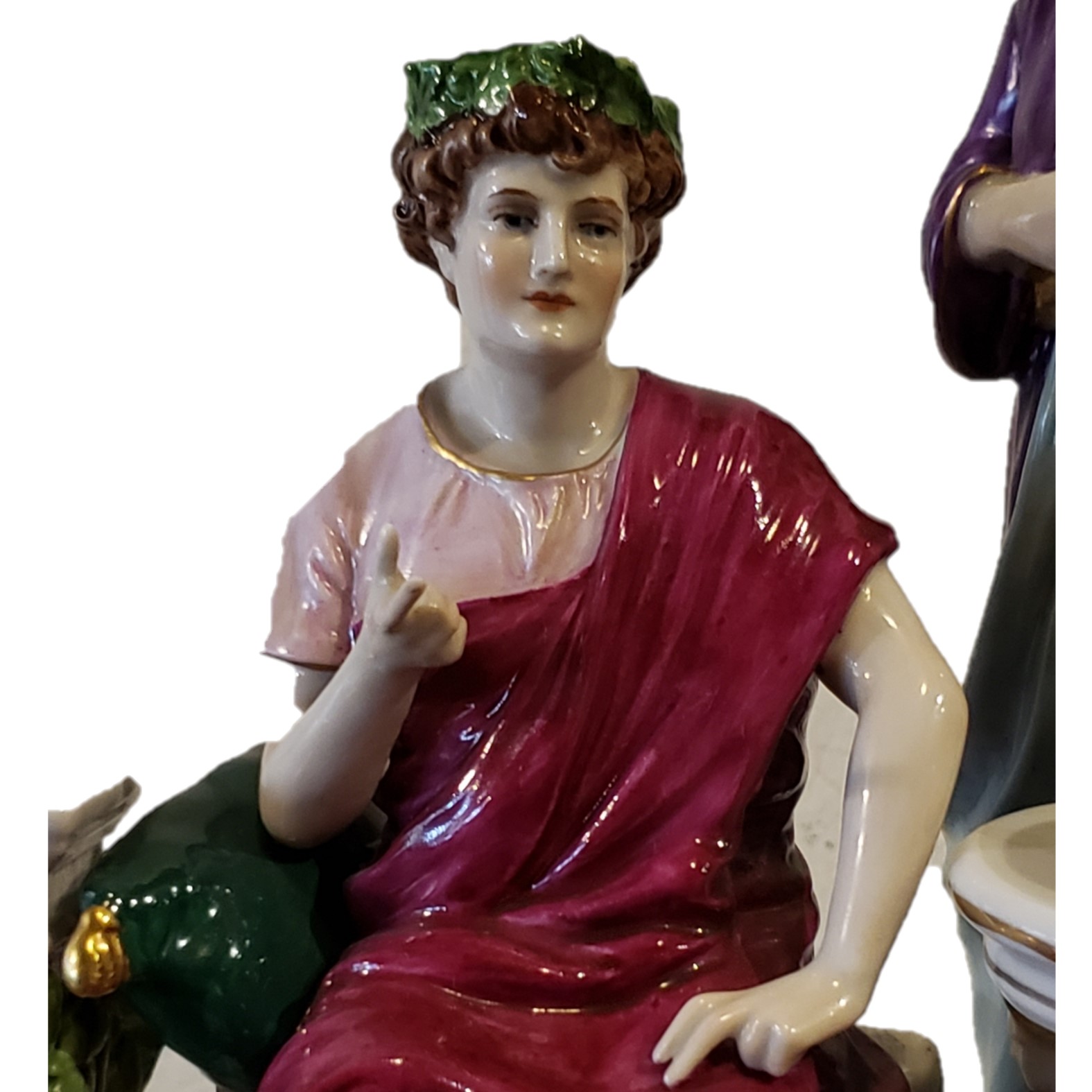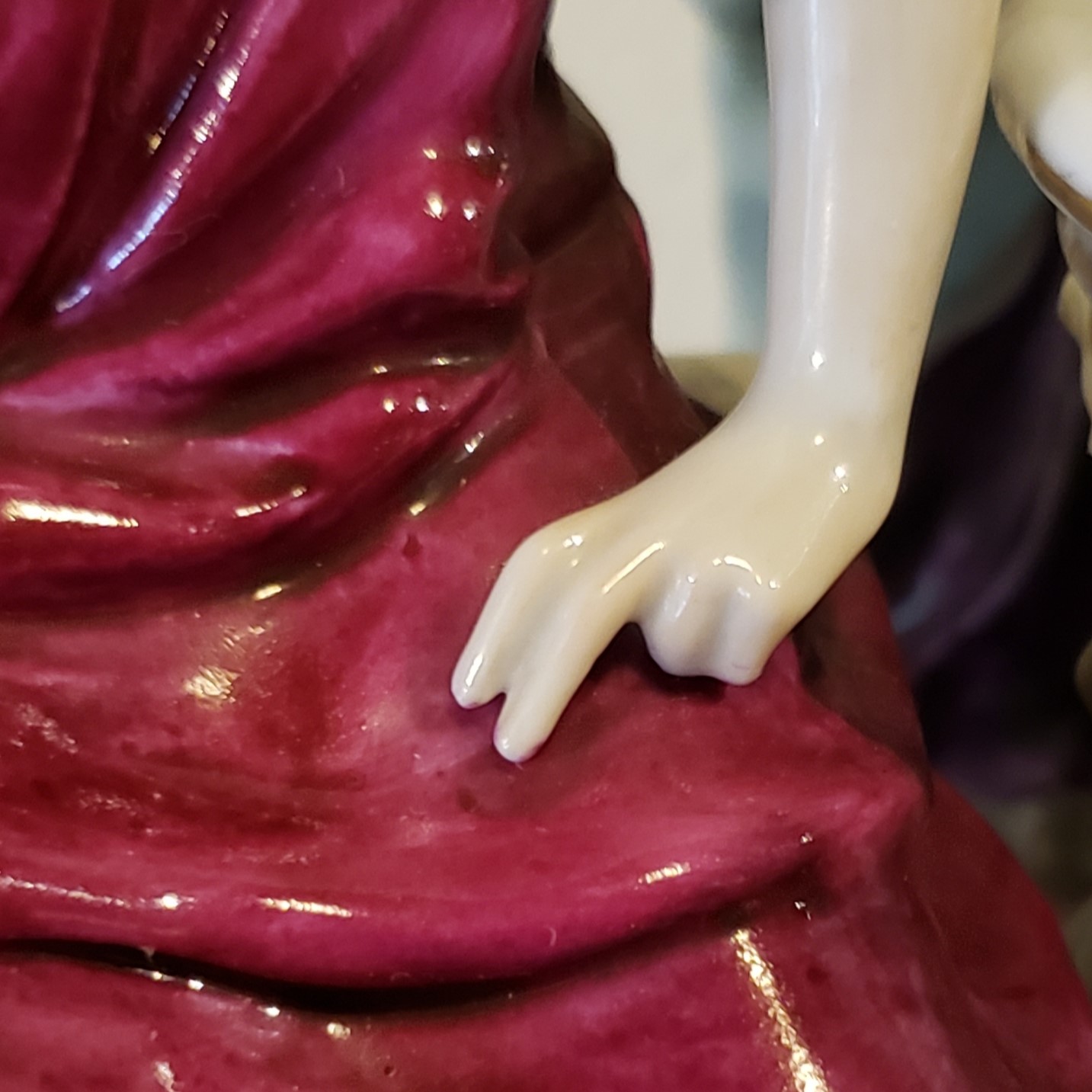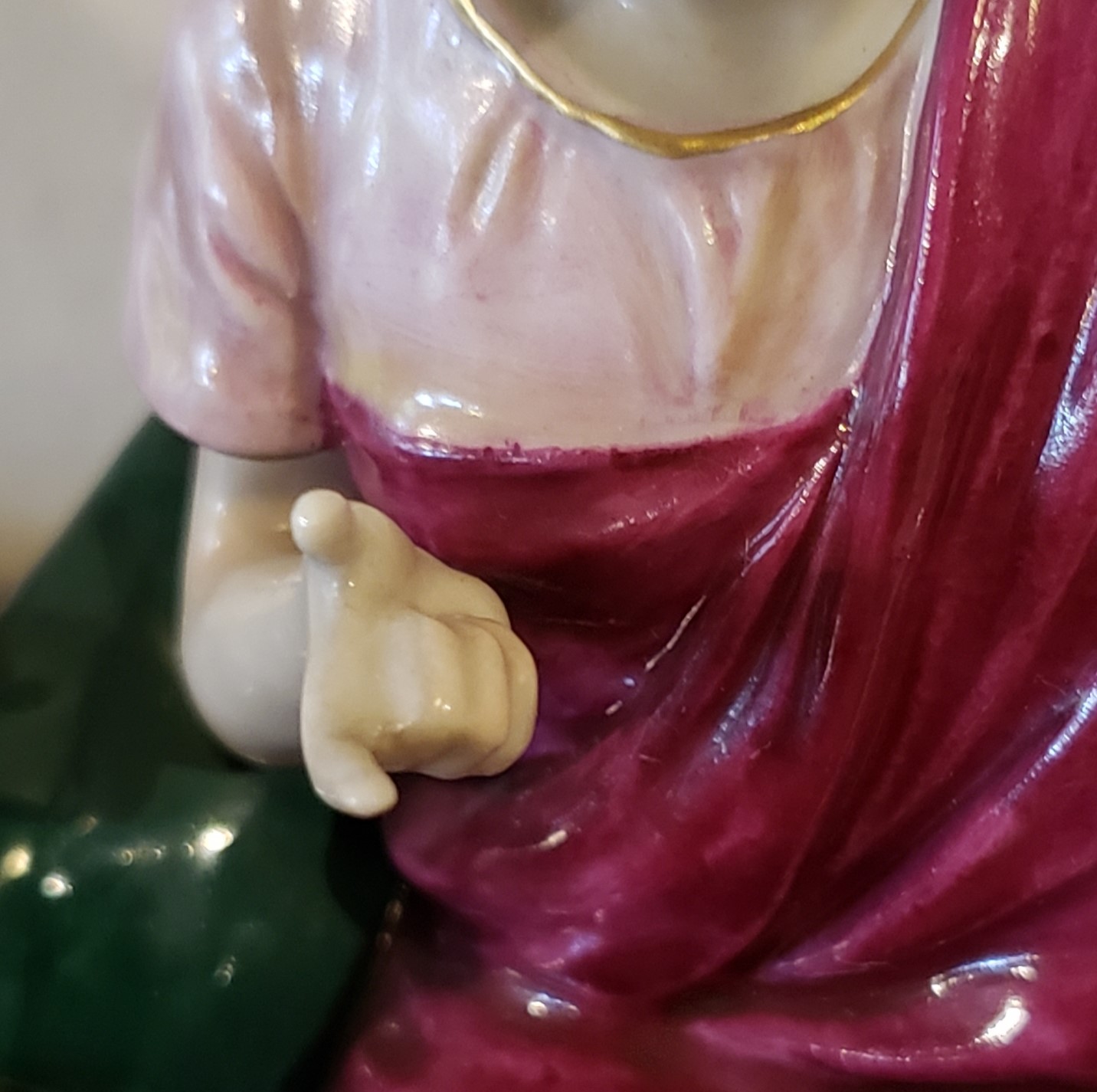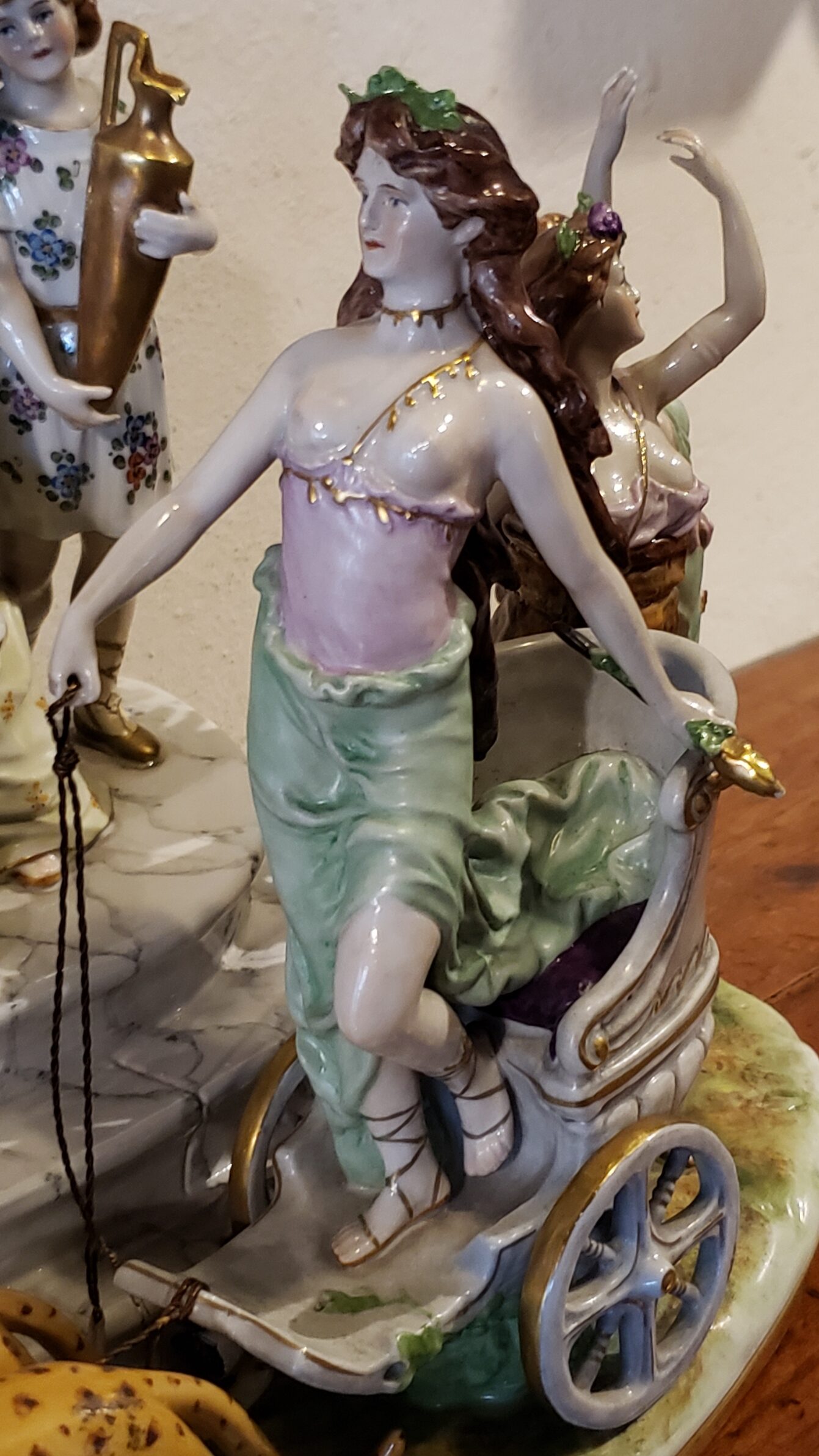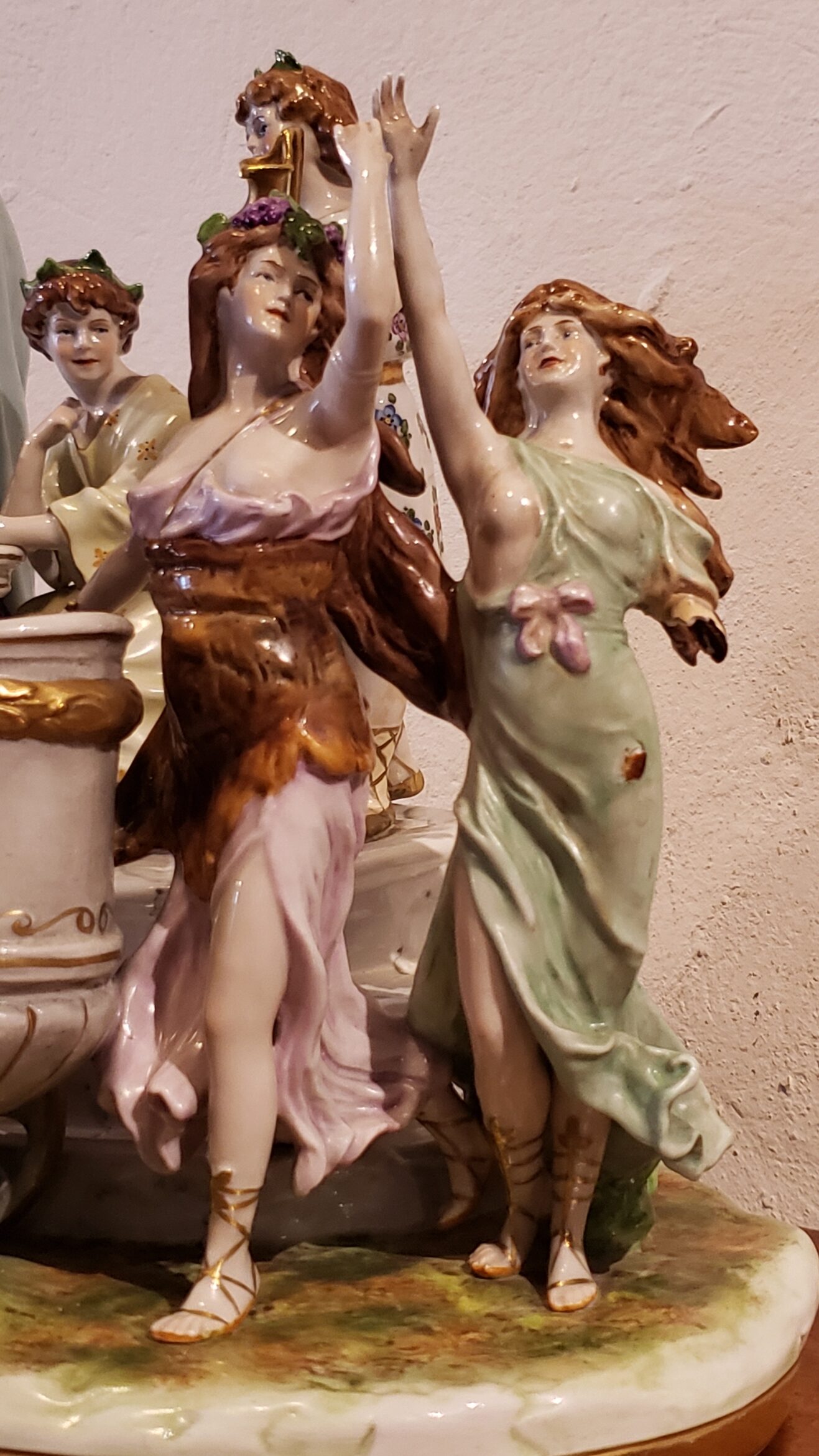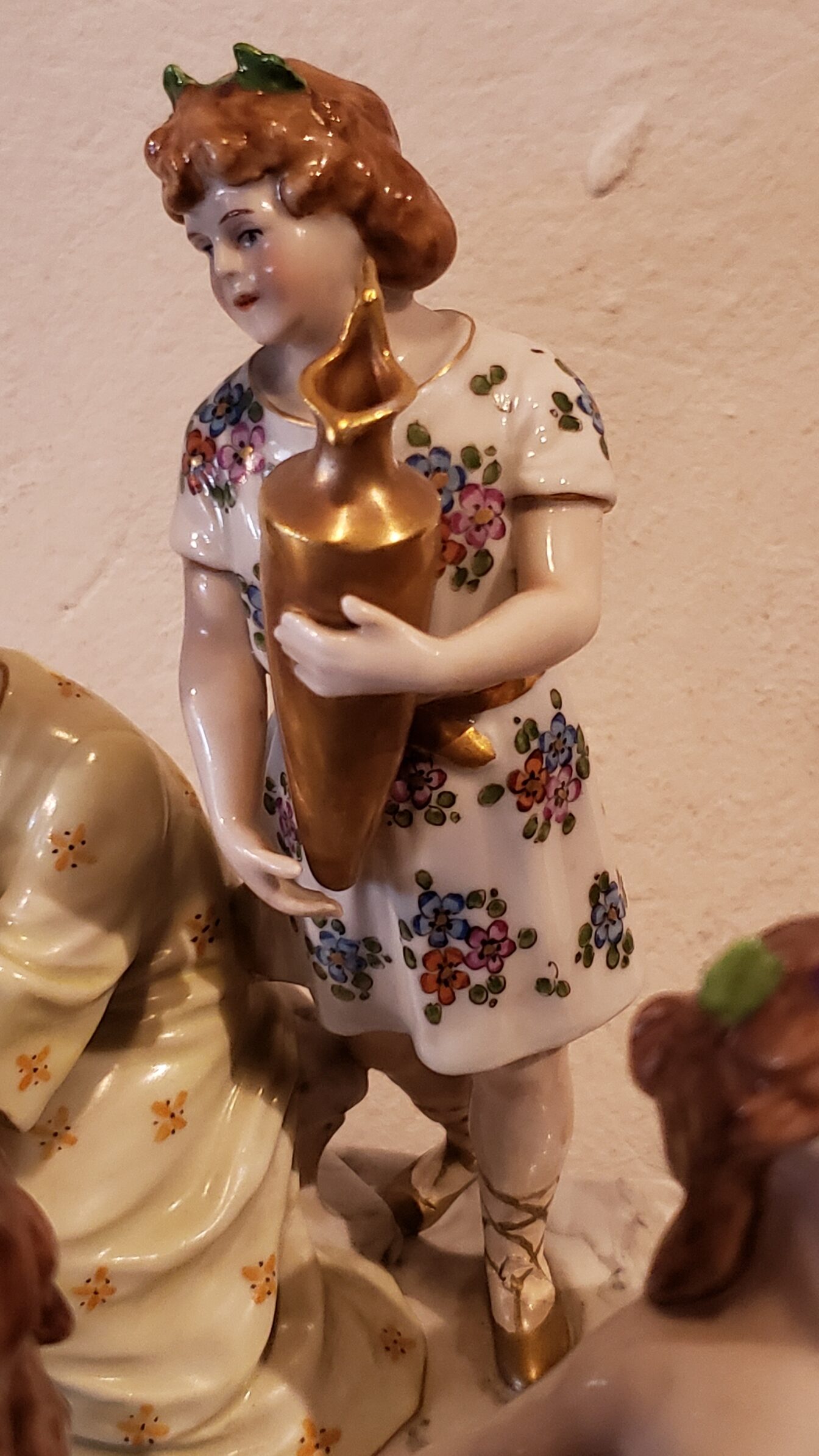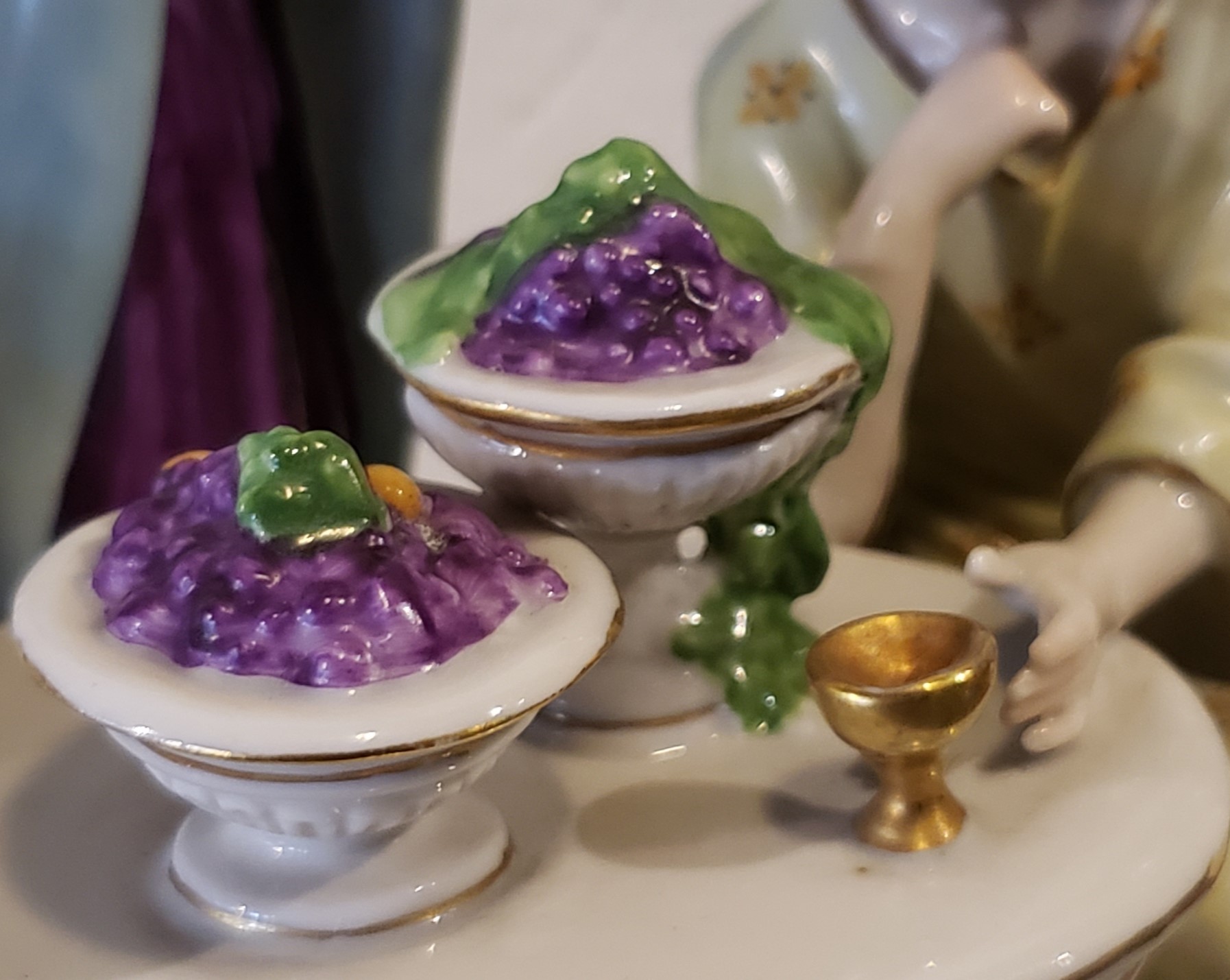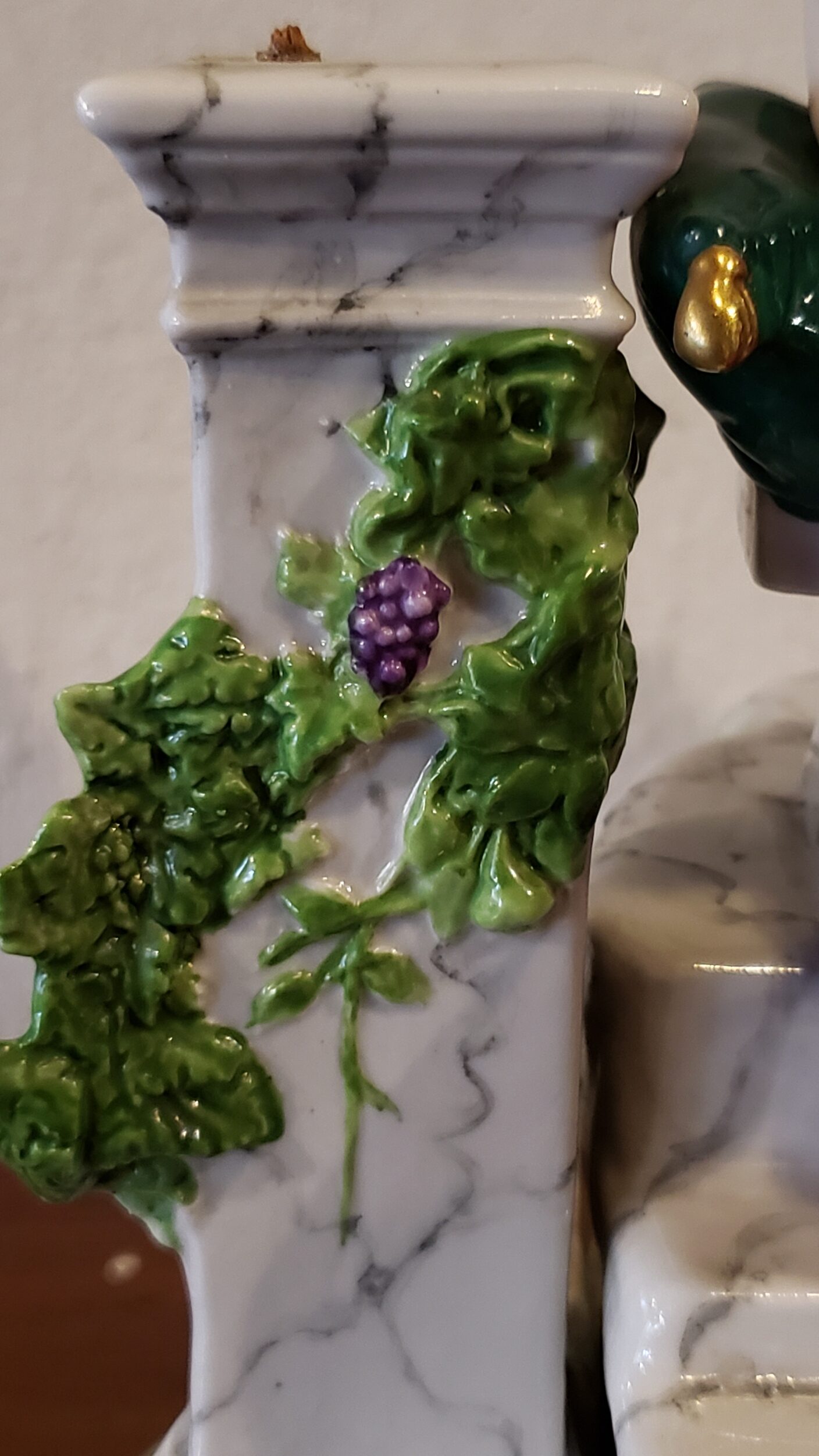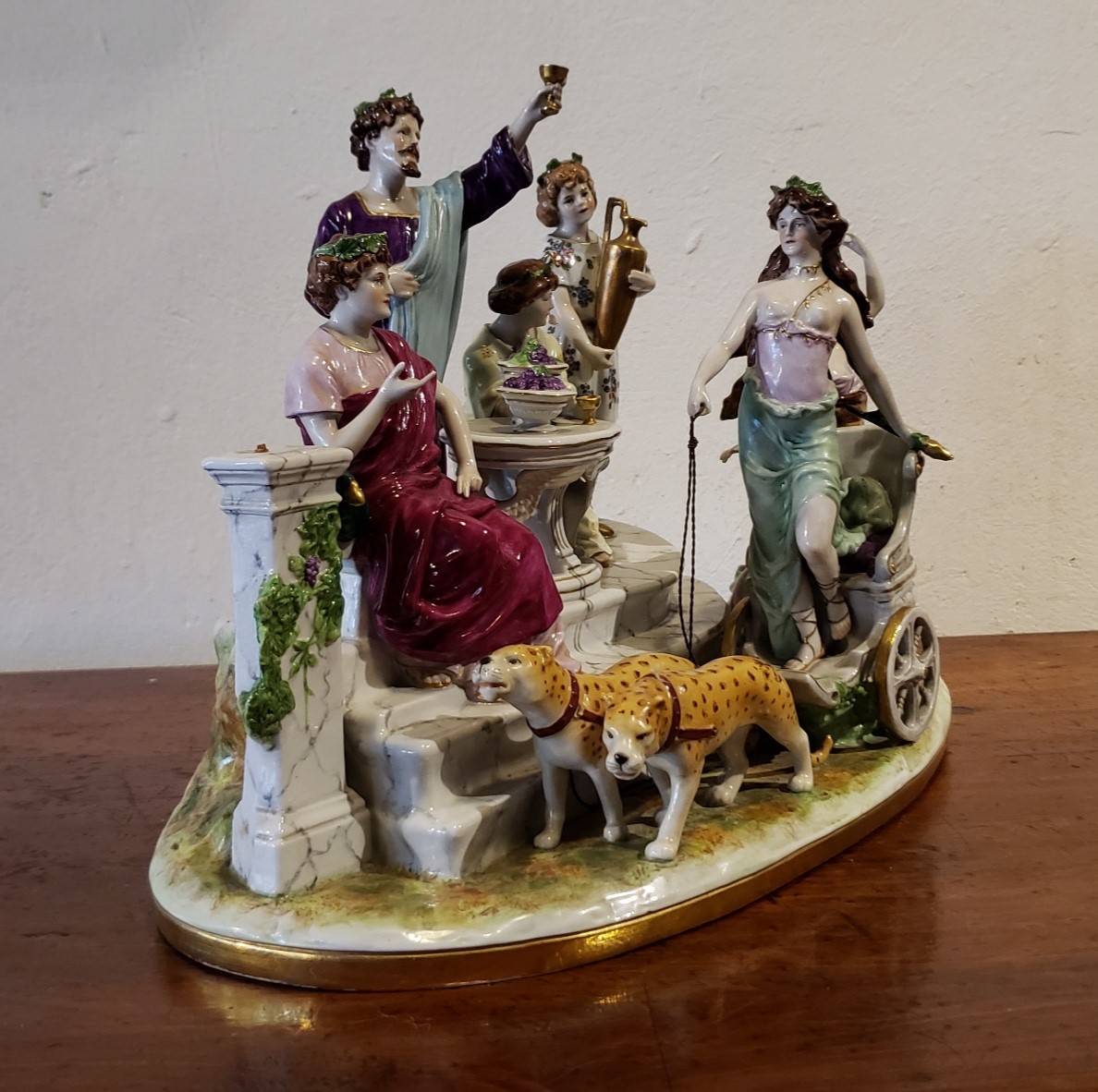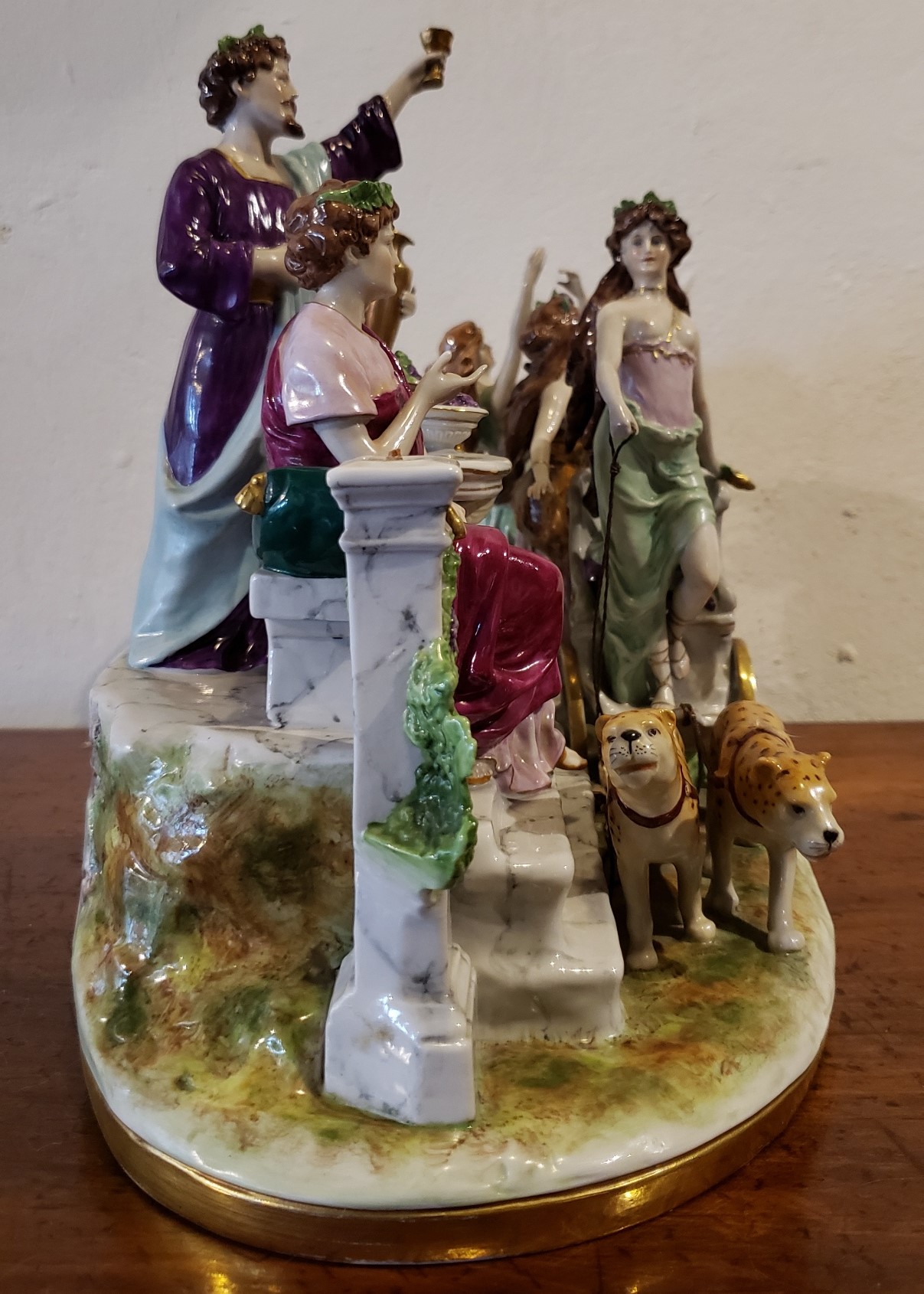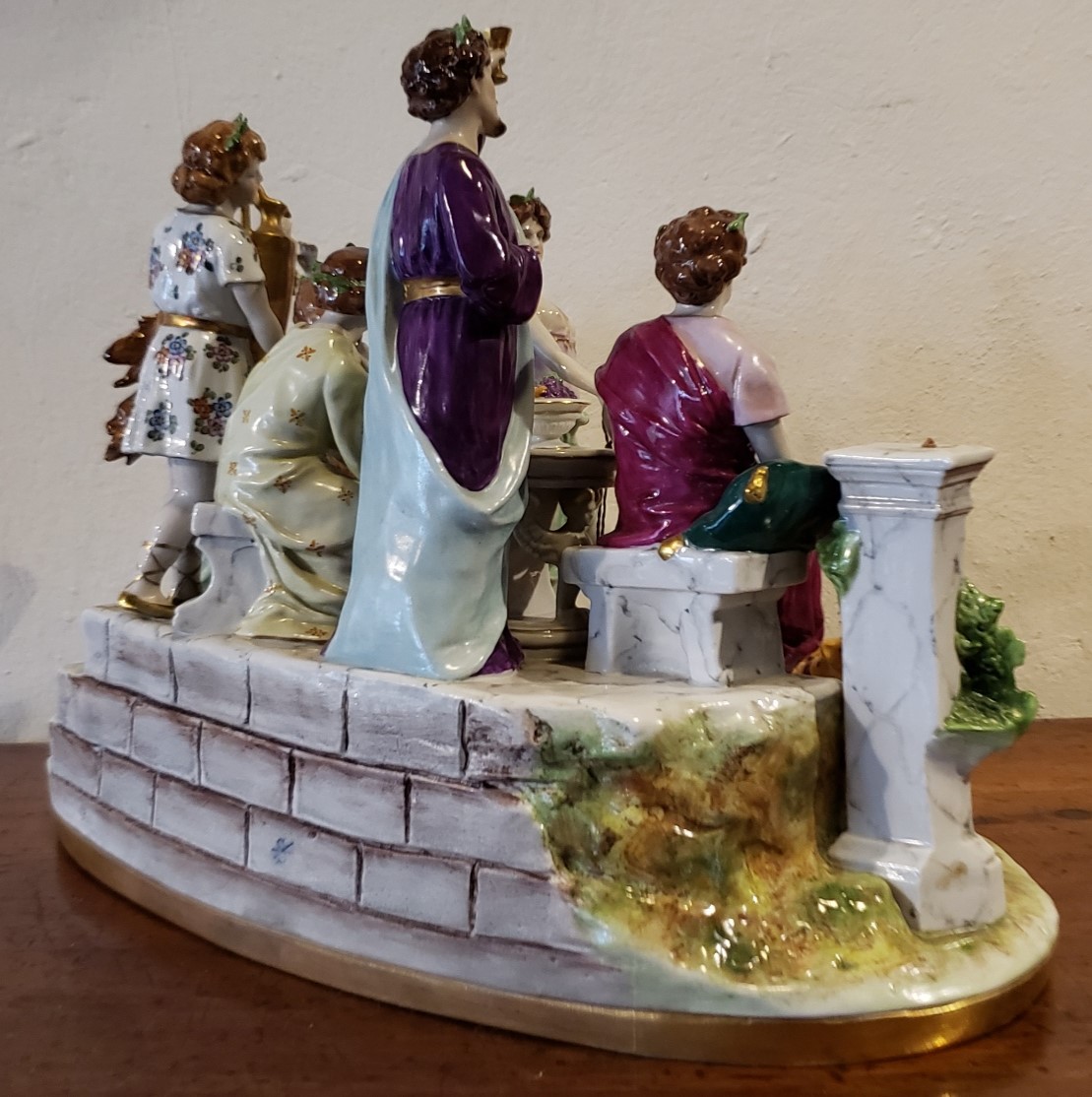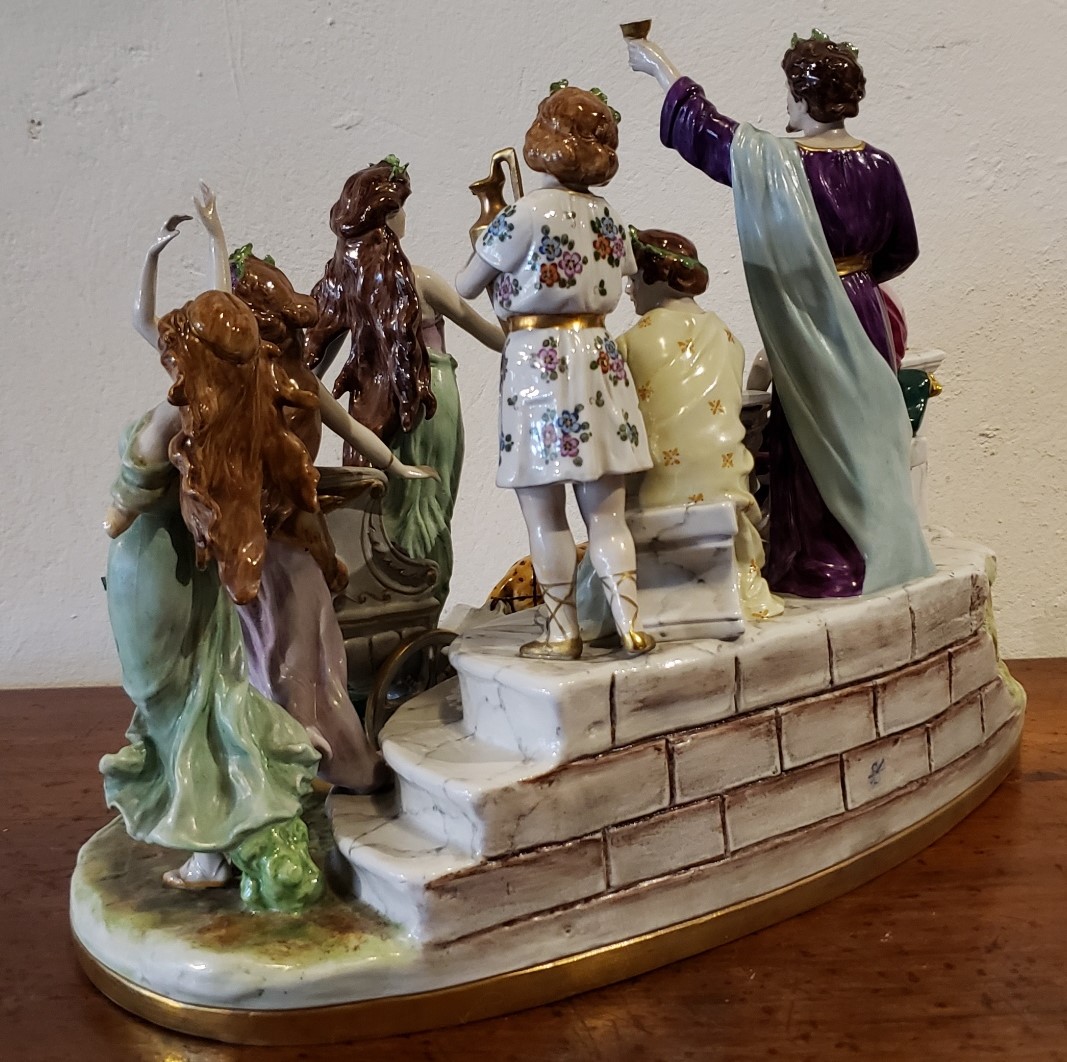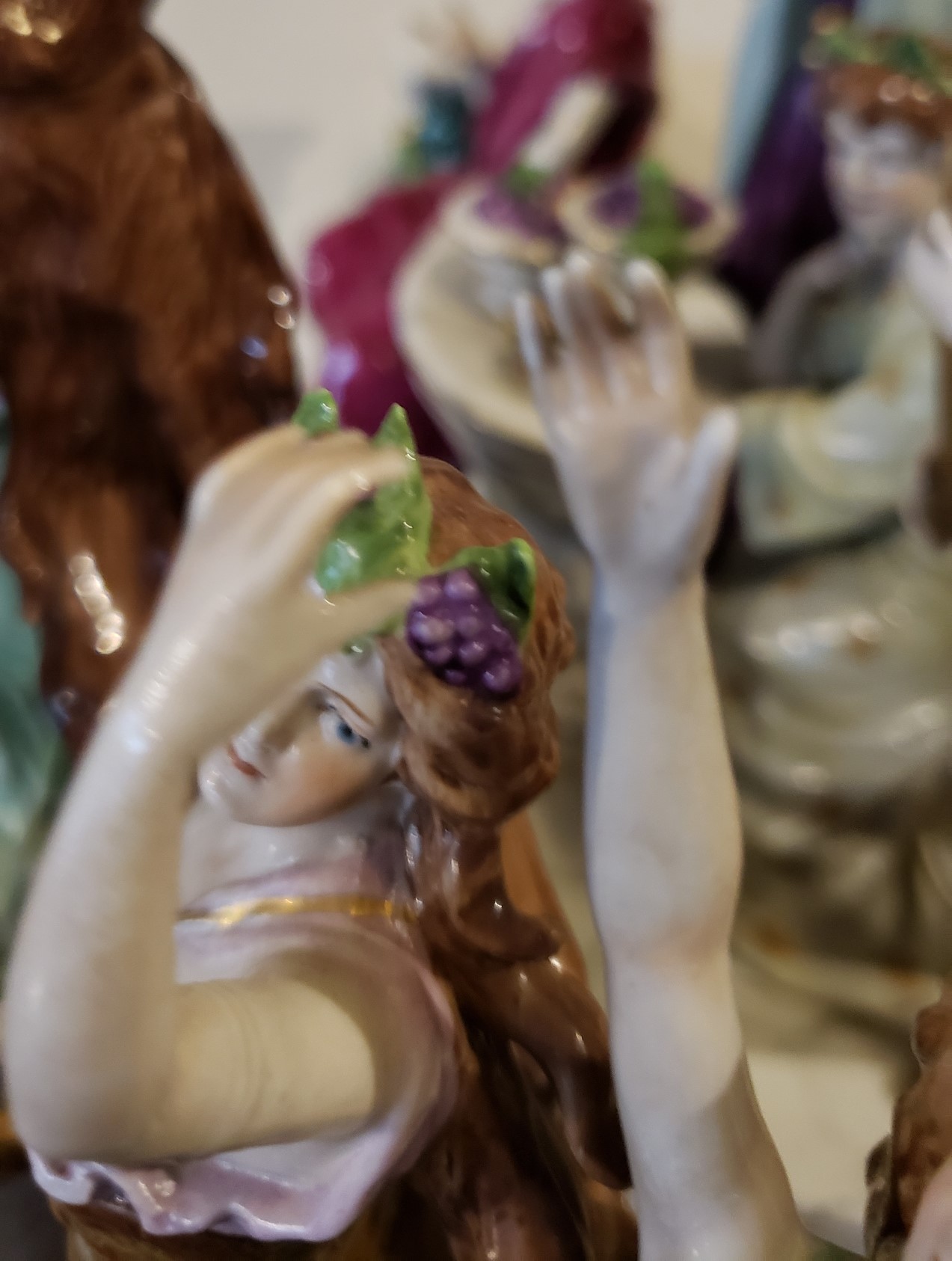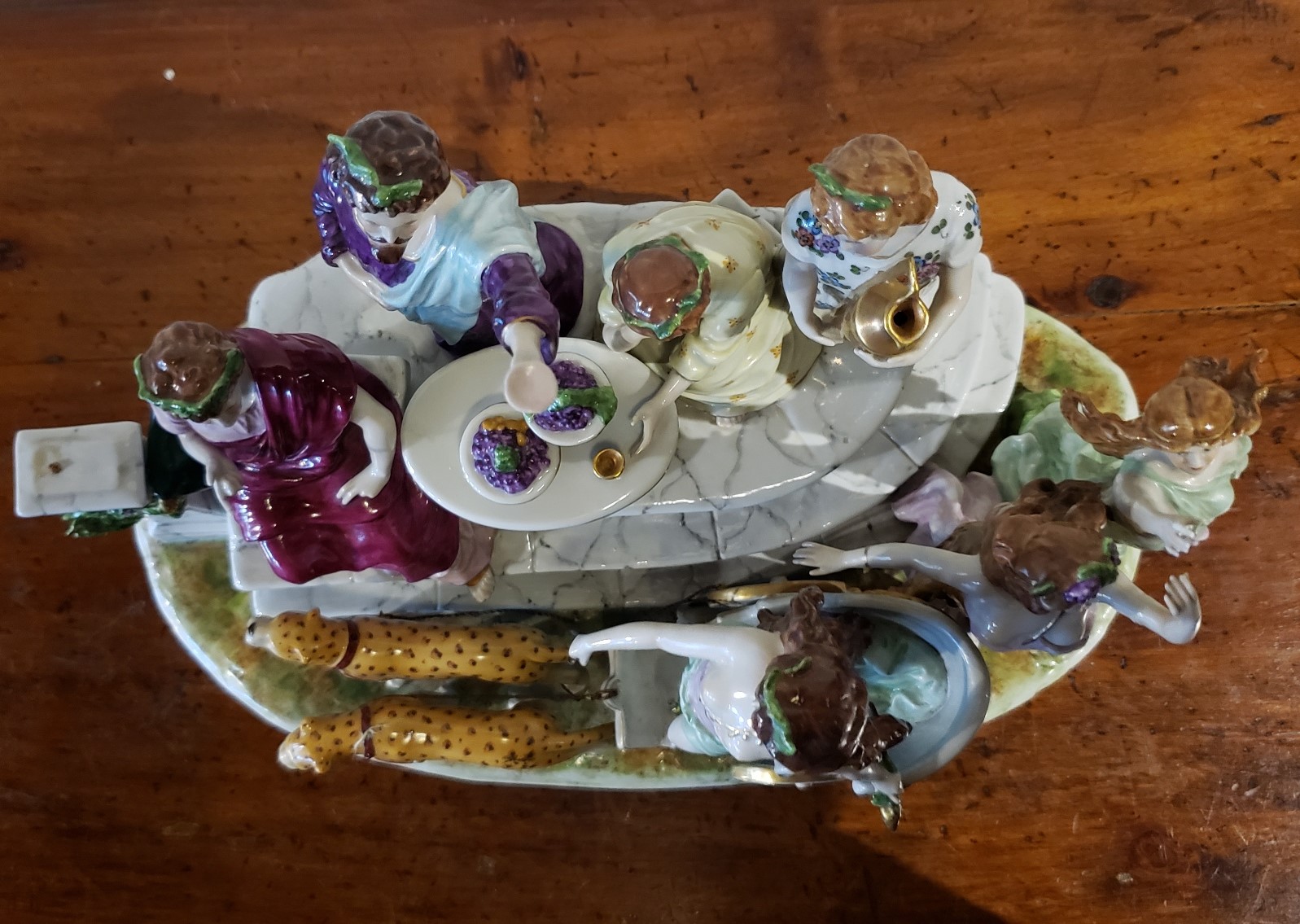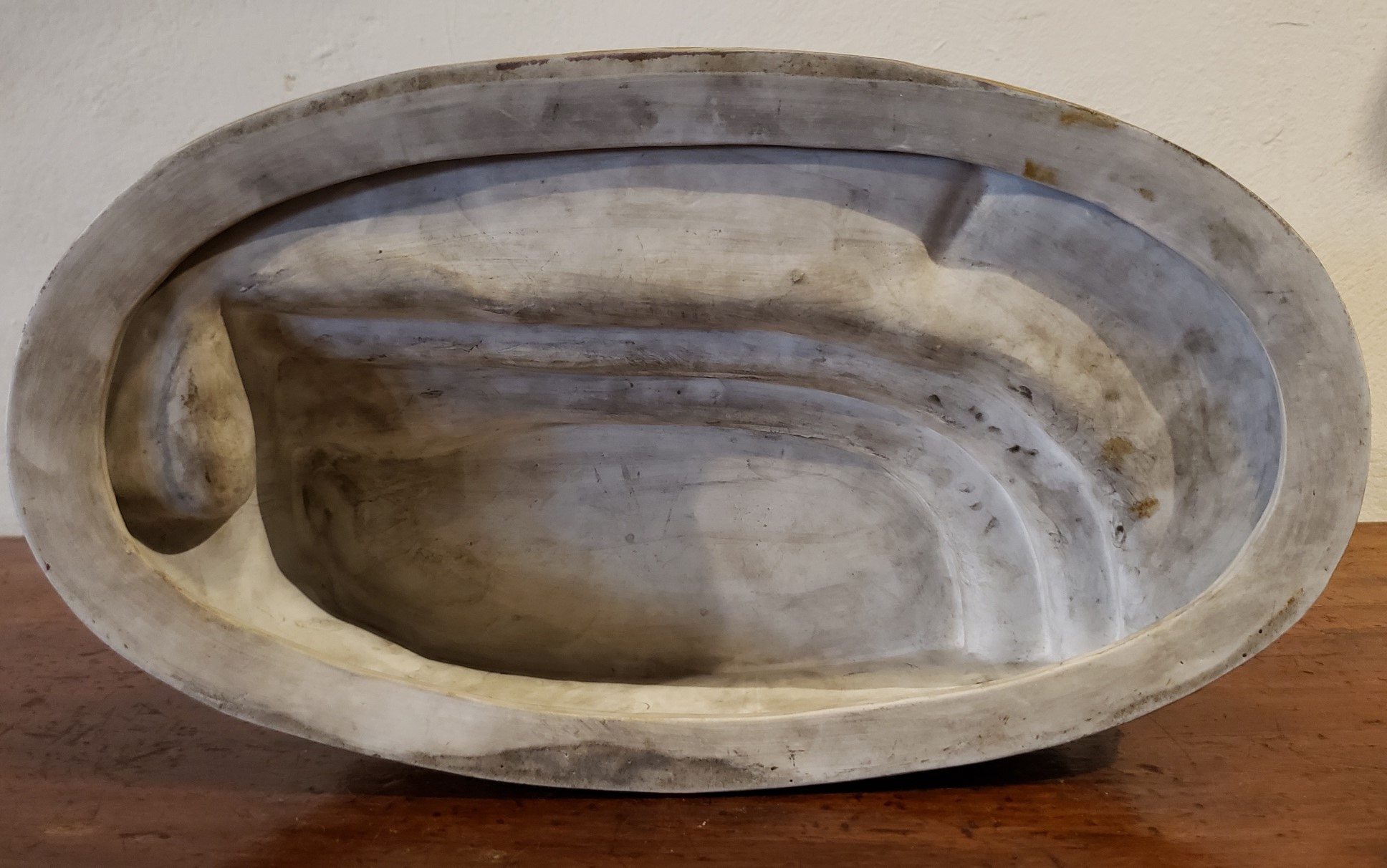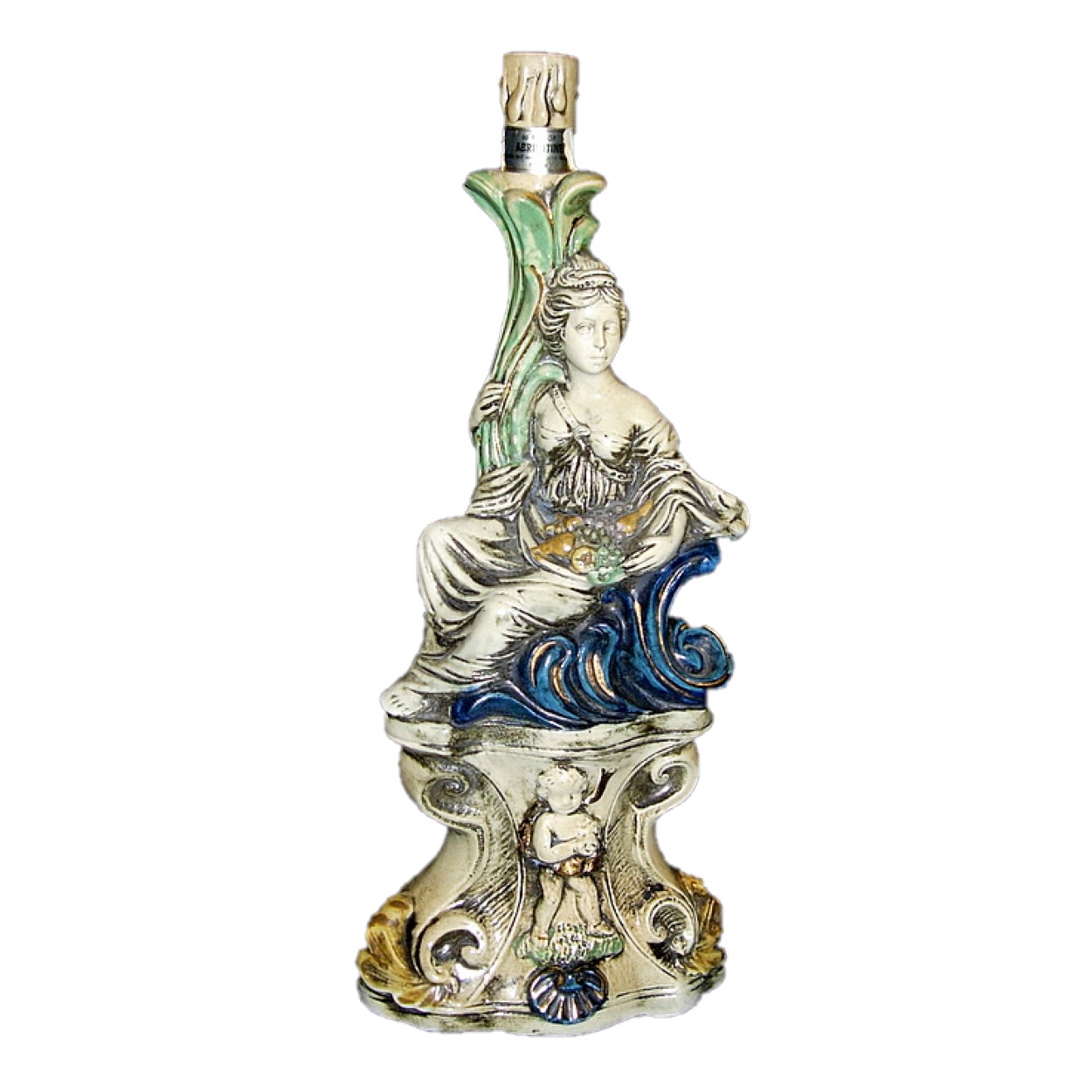Silenus and Dionysus (Bacchanalia)
Porcelain Figurine
Otto Poertzel
Germany
15 x 12 x 8"
c1920
$16,000.00 plus shipping
Description
Otto Poertzel Porcelain Figure Silenus and Dionysus Wine Bacchus Germany c1920
Porcelain figure with a scene of Silenus and Dionysus designed by Otto Poertzel, in Germany, around 1920. It has one damaged part, in one of the maenads, the one on the extreme right of the figure, which has lost an arm. All other parts are in perfect condition. Possibly made in Scheibe-Alsbach but it has no stamps at the bottom so we cannot say for certain.
Dionysus, the Greek god of wine, ecstasy, and revelry, is a frequent subject of artistic representation. In Greek art, he is typically depicted as a youthful and handsome figure, often crowned with a wreath of ivy or grapevines. Dionysus is usually shown holding a thyrsus, a staff topped with a pinecone, and often accompanied by his followers. These include the Maenads, who were female devotees known for their wild and ecstatic dances, and the Satyrs, mythological creatures with goat-like features who were known for their playful and mischievous nature. Silenus, a wise and elderly Satyr who was Dionysus's tutor and companion, is often portrayed as a jovial figure, sometimes riding on the back of a donkey.
Leopards often appear as powerful and symbolic creatures, often harnessed or ridden by the god. They symbolize the untamed and wild aspects of the natural world, mirroring the uninhibited nature of the god himself. The presence of leopards underscores Dionysus's close connection to the animal kingdom and the primal forces of nature. As a god with a dual nature, Dionysus had connections to both the earthly and the divine. Leopards, in Greek mythology, were seen as creatures that could bridge the gap between the world of the living and the realm of the dead, highlighting Dionysus's role as a god of transformation, regeneration, and rebirth. The imagery also suggests a connection between the wild and untamed energies symbolized by the leopards and the unbridled ecstasy experienced by the followers of Dionysus during his rituals. Together, this lively entourage is a common theme in ancient Greek art, reflecting the god's association with the joyous and uninhibited aspects of life, particularly the consumption of wine.
The art depicting Dionysus, Silenus, and their retinue often seeks to capture the essence of revelry and the liberation of the human spirit. The scenes are filled with exuberant celebrations, where wine flows freely, music and dance are in abundance, and the boundaries of social norms and conventions are blurred. These artistic representations celebrate the idea of surrendering to one's desires and indulging in the pleasures of life, as embodied by Dionysus, whose worship was closely tied to the Dionysian Mysteries-a series of secret religious rituals that celebrated life's ecstatic and transformative qualities. The art captures the essence of this divine revelry and serves as a reminder of the importance of embracing the uninhibited and passionate aspects of existence.
Details
Material/Technique:
Porcelain
Size:
15 x 12 x 8"
Date/Period:
c1920
Questions or comments
You can email any questions or comments you may have about this treasure. Fill out the contact form and we will reply to you as soon as possible.


